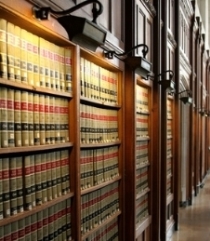Environmentally Friendly Sustainable Transport Systems
Environmentally Friendly Sustainable Transport Systems
Order Plagiarism Free Paper Now
Several elements of eco-friendly transportation have been deliberated. Transportation is a large clientele of energy as well as resources and also a major source of ecological pollution. Commuters tend to use motorized cars for convenient reasons and presumably because they want to avoid using unsafe roads. This culminates to excessive use of gasoline. Controlling the motorized transportation to a distinct boundary is needed to manage energy usage and equally lessen air and noise contamination. Green vehicles are (Adejumo and Bikabilty, 2010) somewhat energy proficient, contamination free and expedient mode for short distance travelling.
Certainly because of lack of facilities their usage is not preferred. Eco-friendly, haulage enhances the use of proficient cars by satisfactory provisions. Environmentally friendly transport has more benefits for users because it keeps the environment free of pollution and owns healthy living conditions. The usage of green cars is one part of eco-friendly transport; waste material is however, another critical facet of maintainable transportation. This includes steel engineering slag, paper industry waste in the construction (Barter, 2009) of pavements, embankments of roads as well as rails and so forth which are perilous as far as ecological pollution is anything to go by.
Introduction
The transport system is a critical element for economic development because it makes ways to resources and markets. It also enhancesquality of life linking individuals to occupation, healthiness, teaching, refreshment and other social amenities. As such, transportation plays a crucial function in fiscal and social growth. Nonetheless, it has several spill-over effects like congestion, wellbeing, contamination and non-renewable resource exhaustion. The model of sustainable transportation (London Air Quality Predictions, 2013) can stem from thegeneral maintainable evolution period that grips all areas of human activity. Efficient andecon-friendly transport system is an important element to well-functioning and civilized communities.
Environmentally Friendly Sustainable Transport Systems
Order Plagiarism Free Paper Now
Undeniably, both industrialized and developing nations are faced with critical issues in choosing and planning for their future haulage systems, when there is need towards sustainable development that balances (Rassafi and Vaziri, 2005) accessibility, movement, safeguard of human welfare and the ecosystem. The theory of eco-friendly transportation stems from these general terminologies that imply movement of persons and goods in ways that are ecologically, socially and economically sustainable.
Vehicle discharges augment to the increasing concentration of gases connected to the specters of a warming planet. When it comes to importance, greenhouse emissions linked to road and transport are carbon dioxide (CO2), methane (Adejumo and Bikabilty, 2010) (CH4) and nitrous oxide (N2O). While the road transport accounts for more than twenty percent of the collective emissions in UK and thirty three percent in the US. It is also the third largest source of greenhouse emitted across the UK. Carbon dioxide represents about eighty five percent of the greenhouse pollution from the automobiles.
Environmental pollution is at its highest within the transport sector. Motorway transport is the leading source of myriad local discharge such as benzene, 1, 3-butadiene, carbon dioxide, nitrogen oxides as well as nitrogen (Jain, Parida and Mittal, 2013) oxides (NOx) among others. The percentage of contributions in urban centers for instance, is especially high. In the UK, road transport entails almost eighty percent of particulate discharge.
Methodologies
Now we will discuss the various methodologies to be adopted for eco-friendly transportation. The first methodology in this regard is the use of (Friends of the Earth, 2011) Green vehicles and other is the utilization of waste materials causing environmental pollution in the construction of embankments for railway tracks and roads.
Environmentally Friendly Sustainable Transport Systems
Order Plagiarism Free Paper Now
Green Vehicles
This is an automobile that generates eco-friendly emissions that have less destructive effects to the environment than comparable traditional internal (London Air Quality Predictions, 2013) combustion engine automobiles that run on gasoline or diesel. Green automobiles are powered by alternative sources of energy and advanced vehicle technologies that comprise hybrid electric cars, plug-in hybrid cars, battery electric cars, compressed-air cars, hydrogen and fuel cell cars, clean ethanol cars, flexible fuel cars and pollution (Jain, Parida and Mittal, 2013) free diesel automobiles. Uncontaminated diesel cars and certain sources also entail using combinations of biodiesel as well as ethanol energy or gasohol.
Various authors also entail traditional automobiles with high energy economy, as they supposed that increasing fuel economy is the most economical way to enhance energy proficiency and contain carbon emissions in the transport segment in the short term. As part of their contribution to eco-friendly haulage, ecologically (Mayor of London, 2011) friendly automobiles curtail air pollution and greenhouse discharge, and contribute to energy independence by decreasing oil imports.
Detached Bicycle Lanes for NMV: Essentials for Sustainable Transport Systems
An eco-friendly transport structure ought to provide accessibility to all urban dwellers with safe and eco-friendly modes of transport. For instance, if a huge segment of the population is not able to use motorized transport- either private vehicles or public buses, they have to walk or cycle at their places of work. If cyclists and
Providing cyclists and pedestrians with a reliable transport system should also ensure that a road space is physically segregated from motorized circulation, or the speed of the motorized traffic should be curtailed. Major roads of the city should be made NMV-approachable. Dedicated NMV paths through parks, green belts as well as narrow city boulevards could serve as extra network capacity cyclists.
Environmentally Friendly Sustainable Transport Systems
Order Plagiarism Free Paper Now
Commuters, cyclists as well as non-motorized rickshaws are the most decisive facets in mixed traffic. If the substructure design does not meet the demands of these facets, all methods of transport operate in suboptimal conditions. It is probable to (Wen News 2013) restructure existing roads to present a safe and convenient ecosystem for non-motorized methods, particularly if the right of way is 30 metres or more, and this can lead to enhanced proficiency in public transport system as well as the capacity of the corridor when quantified in number of commuters per hour, per street.
Converting traditional vehicle into Green vehicles
This will involve integrating renewable energy/fuel. Basically, cars that use gasoline can endure up to 10 percent ethanol. Furthermore, flexible-fuel cars thatpermits any mixing of ethanol and gasoline to about 85 percent. Traditional gasoline-powered (Waste Watch, 2011) vehicles can be converted so that they can permit optional use of CNG. Nevertheless, biodiesel can be dangerous since it eliminates the whole clogged deposit in the engine, blocking filters, hence if precaution is not followed when changing from dirty fossil to biodiesel. Generally, it’s efficient when it comes to de-coking diesel engines combustion while ensuring they are clean. Owing to the fact, that diesel engines are efficient with respect to combustion, thus biodiesel is the lowest release energy for diesel vehicles and the most appropriate. Additionally, biodiesel spills will completely biodegrade in three weeks making biodiesel the most efficient sustainable transport.
Environmentally Friendly Sustainable Transport Systems
Order Plagiarism Free Paper Now
Other options
Solar powered and wind-powered vehicles is another sustainable transport that be implemented in the Greater London. With respect to solar powered vehicles, solar will be collected from solar panels on the vehicle roof. Then photovoltaic cells change energy from the sun to electric power. On the other hand, wind powered will use wind turbines placed strategically on the vehicle that are then converted to electric energy. Other options include walking, cycling besides they are good as far as environmental sustainability is concerned compared to other alternatives.
The use of Paper mill sludge for stabilization of sand roads
This is a technique used in stabilizing loose surface with paper mill sludge in aggregate rare regions. Aggregate is significantly required while sludge is a byproduct from recycled paper and effective stabilizing element. Sludge substances such as wood and clay present the sand with cohesive features that enable it to fill voids. This property of sand and sludge, its integration, use, performance particularly on roads allows it to form minimize considerable erosion issues and reduces the level of sludge
Traffic pollution
The existing transport system is not appropriate since London is virtually at halt following congestion from traffic. Londoners currently use their own transport means because they have no other option, due to no public transport in their neighborhoods, public transport is not reliable or private means are cost effective. Again, in London transport costs (London Air Quality Predictions, 2013) transportation costs are very high compared to any region in Europe. As a result, they need an efficient, sustainable and eco-friendly transport. Much as charging congestion may be a good step, it requiresto be handled in collaboration with other underlying transport issues. For that reason, there is the need for innovative vehicles that do not release much carbon dioxide. Additionally, green types of transport will be necessary such as Croydontram therefore there is need to be expanded.
Environmentally Friendly Sustainable Transport Systems
Order Plagiarism Free Paper Now
Reducing the impacts of noise
Whereas transport system in London, offers considerable social, environmental and economic benefits, it have adverse effects on the environment. Noise pollution from transport is higher compared to other places in Europe. Introducing low carbon vehicles will be eco-friendly since the emissions are low. Even though, design and regulation can be of great help in minimising noise pollution, changing resident’ behaviors can be vital. Effective management of freight will be implemented; nevertheless more can be attained by implementing noise lessening initiatives particularly in residential places.
Air pollution
The degree of air pollution in Greater London is high as a result of incomplete combustion of fuels in transportation. This leads to release of harmful chemicals in the environment. These calls for a sustainable transport (Gudmundsson and Hojer, 2010) network without gaseous emissions to the environment. In addition, transportation modes such as tube lines do not lead to direct emissions in the environment. It is of great importance to increase performance of transport system while reducing carbon dioxide emissions, it will be vital to minimize emissions via various ways including;
· Implementing low or non carbon fuels including biofuels, hydrogen or electric cars
· Enhancing transport policies to create a strong support of eco-friendly environment
· Development of key performance indicators (KPIs) to help in monitoring compliance of vehicles as far as environmental conservation is concerned.
Environmentally Friendly Sustainable Transport Systems
Order Plagiarism Free Paper Now
Recommendations
Because of health dangers associated with the current transport system, emphasis should be focus on clean transport services such vehicles that run on (Transport for London 2014) natural energy or electricity; high fines for those who violate emission regulations and encouraging people especially learning institutions to minimize traffic congestion.
With respect to noise pollution, stakeholders and other Greater London should implement measures for minimising noise pollution in regions (Regional Affairs Committee 2010) considerably affected by noise from transport systems. Furthermore, they should enhance views on noise pollution and minimize the effects of noise on people through;
· Ensuring that transport system integrate noise mitigation measures
· Adopting speed enforcement policies that do not encourage noise, rapid hastening and deceleration
· Initiating road maintenance interventions (Transport for London 2014) with less noisy surface as much as possible
· Acquiring improved public transport vehicles potentially via joint venture to attain efficiency.
Personal Reflection
A sustainable transportation network should meet the mobility aspect as accessibility requirements of people through provision of safe and eco-friendly modes of transport. Much as this seems to a complex and difficult aim in developed economy like London, people needs are always conflicting and diverse. For instance, a big proportion of the population is in position to use private as well as public transport systems.
Alternatively, this population can either walk or cycle to their respective destinations. Thus, I think providing good transport systems for commuters and cyclists by physically dividing road areas. These attempts will restrict car users, increase mobility of cyclists.
Environmentally Friendly Sustainable Transport Systems
Order Plagiarism Free Paper Now
It’s of great importance to create awareness regarding waste management. This should entail educating them on impacts of sustainable management of waste. Though, the supposed cost of putting up an efficient recycling plant is a main hindrance for a number of local governments, the benefits are many. For instance, it will create job opportunities.
Subsequently, various measures implemented in market development, recycling and waste disposal is appropriate for supporting and assisting in the development of environmental friendly ways for managing waste. Consequently, before we become forward looking, it would be critical to take stock of improvements in the recent past. Without equivocation, I want to reckon the fact that transport is an elementary facet of the UK economy. While the usage of waste materials such as paper mill slush could be ideal in the road construction, it may also be another health hazard.
A technique of stabilizing loose-sand boulevard surfaces with paper mill sludge in average undersupplied regions has been progressed. The demand for aggregate is so high; this therefore attracts hefty monetary costs. The mud is made from recycled papers that are easily accessible, and is an operative stabilizing negotiator. The idea to embrace eco-friendly road construction technology would be the way forward over the traditional forms of construction. However, this will also call for the establishment of guidelines that should guide the implementation process. I hold the view that an effective and functional eco-friendly road is critical for modern cities.
Bibliography
Adejumo. T., Bikabilty 2010. In Metropolitan Lagos: A Conceptualization of Eco Friendly Transportation Alternative.
Barter, P. A. 2009. An International Comparative Perspective on Urban Transport and Urban Form in Pacific Asia: The Challenge of Rapid Motorization in Dense Cities. PhD. Thesis, Murdoch University, Pert, Australia.
Gudmundsson, H. and M. Hojer 2000. Sustainable development principles and their implications for transport. Ecological Economics, 19, 269-282, 1996.
Jain, S.S., Parida, M., Mittal, N. 2013. “Environmental Impact Analysis of Transportation Systems in Delhi”, ITPI Journal March.
Rassafi. A.A, Vaziri. M. 2014. Sustainable transport indicators: Definition and integration
Mayor of London, 2011, “The State of London: Environment”, www.london.gov.uk
Waste Watch, 2011, Submission of Evidence to House of Commons Environment, Transport and
Regional Affairs Committee 2010. Environment Sub-committee, Inquiry: Delivering Sustainable Waste Management, www.wastewatch.org.uk
Friends of the Earth, 2011. Waste: Campaigning on Recycling Plans, www.foe.co.uk
Bailey, Mike 2012. These recommendations are based on a hierarchy of waste management derived from Burn, Bury or Recycle, Options for a Waste Strategy in Plymouth, www.eastdeveon.net/prf/strategy.htm
Wen News 2013. Winter 2000, Newsletter of the Women’s Environmental Network.
Transport for London 2014. Transport Statistics for London, p. 29.
London Air Quality Predictions 2013. Department of Space and Atmosphere Physics, Imperial College. London Health Observatory, March 2001. www.lho.org.uk










